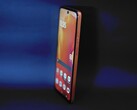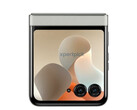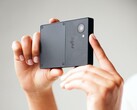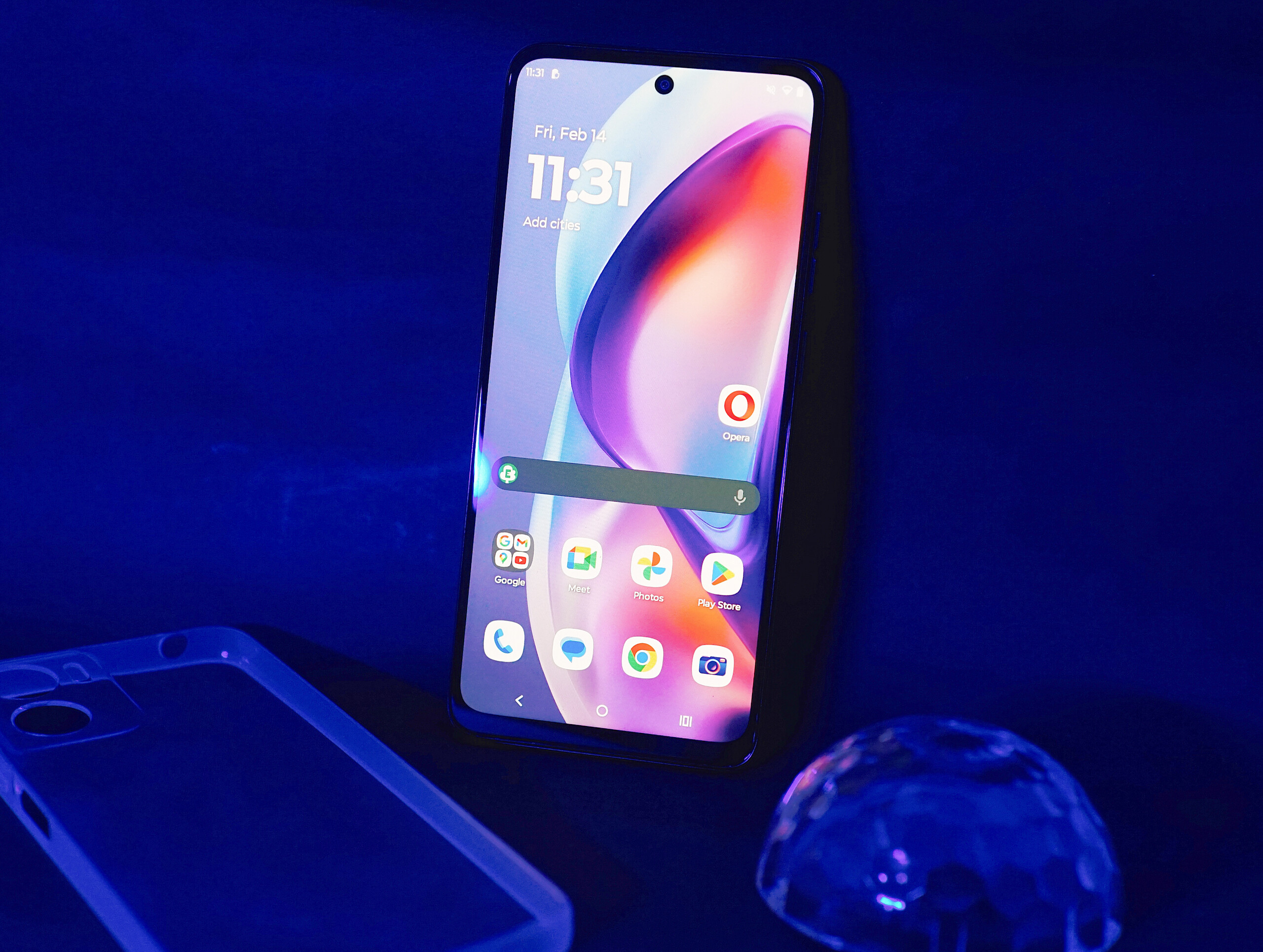
Motorola Moto G05 smartphone review – The most attractive budget phone now with a 50 MP camera
Faux-leather expert.
You don't want your smartphone to cost a lot, but you still want it to look good? The Motorola Moto G05 is available for just over $100, but features a pretty faux-leather back and 50-megapixel camera. The best choice for money savers?Florian Schmitt, 👁 Florian Schmitt (translated by Daisy Dickson) Published 🇩🇪 🇫🇷 ...
Verdict on the Motorola Moto G05
The Motorola Moto G05 offers everything you need for everyday use. Its design, fast fingerprint sensor, its main camera's decent quality, and its reasonable speaker sound are all positive surprises.
You shouldn't expect too much performance and you'll have to live with occasional stutters and waiting times. What we find worse, however, is its lack of NFC, which means you can't make use of the popular Google Pay function.
The phone's screen is sufficiently bright, its SoC isn't throttled under prolonged load, it doesn't heat up too much and its battery lasts long enough for a day's use in most cases.
Overall, the Moto G05 is an attractive and recommendable budget phone if you can do without NFC.
Another tip: There are also models with 128 or 256 GB mass storage on the market. If you can get one for a small surcharge, you should go for it, as our test device's 64 GB is very limited.
Pros
Cons
Price and availability
The Motorola Moto G05 isn't yet available to purchase in the United States. It's MRSP is estimated to be around $140.
Possible alternatives compared
Image | Model / Review | Price | Weight | Drive | Display |
|---|---|---|---|---|---|
| Motorola Moto G05 Mediatek Helio G81 ⎘ ARM Mali-G52 MP2 ⎘ 4 GB Memory, 64 GB eMMC | Amazon: 1. $108.50 Motorola Moto G05 XT2523-2 D... 2. $129.99 Motorola Moto G Power 5G | 2... 3. $225.00 Motorola Moto G75 5G (XT2437... List Price: 130€ | 189 g | 64 GB eMMC Flash | 6.56" 1612x720 269 PPI IPS | |
| Motorola Moto G04 Unisoc T7200 (T606) ⎘ ARM Mali-G57 MP1 ⎘ 4 GB Memory, 64 GB UFS 2.1 | Amazon: 1. $24.60 for Motorola Moto G04 / G24 ... 2. $18.99 SwarKing Replacement Battery... 3. $10.99 WRTBS Phone Case for Motorol... List Price: 119€ | 179 g | 64 GB UFS 2.2 Flash | 6.56" 1612x720 269 PPI IPS | |
| Xiaomi Redmi 14C Mediatek Helio G81 Ultra ⎘ ARM Mali-G52 MP2 ⎘ 4 GB Memory, 128 GB eMMC | Amazon: List Price: 150€ | 211 g | 128 GB eMMC Flash | 6.88" 1640x720 260 PPI IPS | |
| Motorola Moto G24 Mediatek Helio G85 ⎘ ARM Mali-G52 MP2 ⎘ 8 GB Memory, 128 GB eMMC | Amazon: List Price: 150€ | 181 g | 128 GB eMMC Flash | 6.56" 1612x720 269 PPI IPS |
Table of Contents
- Verdict on the Motorola Moto G05
- Specifications
- Case and connectivity – The Moto G05 with an attractive case
- Communication and operation – The 4G phone without NFC
- Software and sustainability – 2 years of updates
- Cameras – Surprisingly good
- Display – Not quite so bright
- Performance, emissions and battery life – Average performance, good stamina
- Notebookcheck total rating
Specifications
Case and connectivity – The Moto G05 with an attractive case
The Moto G05's case makes a very good impression. This is thanks to Motorola's current design language, which combines angular shapes with rounded corners and integrates the upper camera module with a skillful curve.
Fans of black smartphones may not be the happiest: In Central Europe, where this test was carried out, only the Forest Green and Plum Red color variants are currently available, with the slightly bluish green being the more muted shade. The case is sturdy, and the phone's weight of 189 grams is slightly above that of the manufacturer's smartphones of the same size.
The case is protected against splashes of water and dust according to IP54, but you shouldn't submerge the smartphone fully. Its screen is protected by Gorilla Glass 3.
Our test device's 64 GB of mass storage is tight, but versions with 128 GB or 256 GB (then even with 8 GB RAM) can also be found on the internet at almost no extra cost. You can expand its storage via microSD, and the card reader works quickly overall.
Unfortunately, Motorola hasn't installed NFC, which makes it impossible to use the phone as a mobile payment method.
| SD Card Reader - average JPG Copy Test (av. of 3 runs) | |
| Motorola Moto G24 (Angelbird V60) | |
| Motorola Moto G05 (Angelbird V60) | |
| Xiaomi Redmi 14C (Angelbird V60) | |
| Average of class Smartphone (5.72 - 58.9, n=69, last 2 years) | |
| Motorola Moto G04 | |
Cross Platform Disk Test (CPDT)
Communication and operation – The 4G phone without NFC
The Motorola G05 is a 4G cell phone, and our model supports enough frequencies for use in Europe. When traveling worldwide, you should check whether the required frequency bands of your destination country are supported.
Finally, it supports WiFi 5 with multiple antennas, enabling speeds of around 300 MBit/s. The Moto G05 can keep up with the comparison devices, but doesn't offer top speeds for its price range. In our test using the Asus ROG Rapture AXE11000 as a reference router, we even noted reproducible drops in data rates from time to time.
The standby button is located on the right-hand side of the case and a fingerprint sensor is integrated into it. It works reliably and quickly. It is also possible to unlock the device using facial recognition, which is similarly reliable but not quite as secure.
Software and sustainability – 2 years of updates
The Motorola Moto G05 comes delivered with Android 15. The manufacturer promises security updates until December 2026. Long updates aren't common for such inexpensive smartphones, but it is still a shame in view of the device's sustainability. Google Play system level updates are still possible after that and offer a minimum level of security. It isn't known whether there will be any new operating system versions for the smartphone.
Some pre-installed sponsored apps are unavoidable but otherwise, the operating system is very close to pure Android.
In terms of sustainability, there is no information about the device's CO2 footprint or which materials are used. Thankfully, the box is only printed in one color using ink based on soybean oil.
Cameras – Surprisingly good
The main camera on the back has a resolution of 50 megapixels, but usually only takes pictures with a quarter of this, i.e. 12.5 megapixels, as four pixels are combined to achieve a higher light yield. There is a special mode that lets you use the full resolution.
The camera takes decent photos for such an affordable price range, but with less detail than high-end phones. However, as long as you don't enlarge them too much, they are still fine. In low light, the amount of detail is surprisingly high but in dark areas, there is unfortunately a clear lack of brightness.
The front-facing camera with a resolution of 8 megapixels takes decent selfies, but tends to have a bit of a blue cast and overexposes bright subjects.
Image comparison
Choose a scene and navigate within the first image. One click changes the position on touchscreens. One click on the zoomed-in image opens the original in a new window. The first image shows the scaled photograph of the test device.
Main camera plantMain camera surroundingsMain camera low light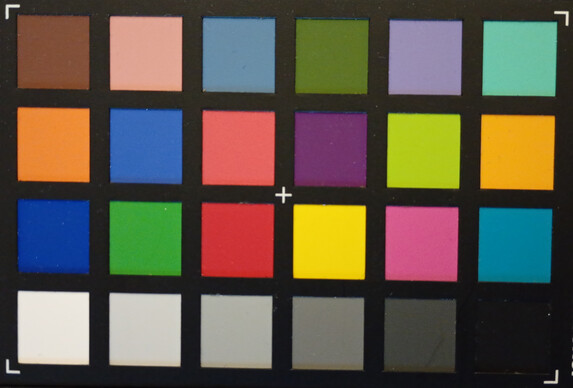

Display – Not quite so bright
The IPS screen has a resolution of 1,612 x 720 pixels and a frame rate of up to 90 Hz.
Its maximum brightness of 370 cd/m² is slightly below that of other devices. On bright days outdoors, this often isn't enough to see the screen's content clearly.
On the other hand, its color reproduction in "Natural" mode is quite accurate.
We didn't note any PWM flickering.
| |||||||||||||||||||||||||
Brightness Distribution: 92 %
Center on Battery: 370 cd/m²
Contrast: 1542:1 (Black: 0.24 cd/m²)
ΔE ColorChecker Calman: 2.09 | ∀{0.5-29.43 Ø4.78}
ΔE Greyscale Calman: 1.7 | ∀{0.09-98 Ø5}
98.9% sRGB (Calman 2D)
Gamma: 2.317
CCT: 6405 K
| Motorola Moto G05 IPS, 1612x720, 6.6" | Motorola Moto G04 IPS, 1612x720, 6.6" | Xiaomi Redmi 14C IPS, 1640x720, 6.9" | Motorola Moto G24 IPS, 1612x720, 6.6" | |
|---|---|---|---|---|
| Screen | -31% | -19% | -47% | |
| Brightness middle (cd/m²) | 370 | 414 12% | 422 14% | 521 41% |
| Brightness (cd/m²) | 358 | 396 11% | 401 12% | 510 42% |
| Brightness Distribution (%) | 92 | 91 -1% | 89 -3% | 93 1% |
| Black Level * (cd/m²) | 0.24 | 0.34 -42% | 0.3 -25% | 0.39 -63% |
| Contrast (:1) | 1542 | 1218 -21% | 1407 -9% | 1336 -13% |
| Colorchecker dE 2000 * | 2.09 | 3.26 -56% | 3.21 -54% | 4.83 -131% |
| Colorchecker dE 2000 max. * | 5.49 | 6.74 -23% | 6.29 -15% | 7.71 -40% |
| Greyscale dE 2000 * | 1.7 | 3.9 -129% | 2.9 -71% | 5.3 -212% |
| Gamma | 2.317 95% | 2.075 106% | 2.382 92% | 2.111 104% |
| CCT | 6405 101% | 6914 94% | 6338 103% | 7021 93% |
* ... smaller is better
Screen Flickering / PWM (Pulse-Width Modulation)
| Screen flickering / PWM not detected | |||
In comparison: 53 % of all tested devices do not use PWM to dim the display. If PWM was detected, an average of 8111 (minimum: 5 - maximum: 343500) Hz was measured. | |||
Display Response Times
| ↔ Response Time Black to White | ||
|---|---|---|
| 28.9 ms ... rise ↗ and fall ↘ combined | ↗ 15.2 ms rise | |
| ↘ 13.7 ms fall | ||
| The screen shows relatively slow response rates in our tests and may be too slow for gamers. In comparison, all tested devices range from 0.1 (minimum) to 240 (maximum) ms. » 76 % of all devices are better. This means that the measured response time is worse than the average of all tested devices (20.2 ms). | ||
| ↔ Response Time 50% Grey to 80% Grey | ||
| 42.9 ms ... rise ↗ and fall ↘ combined | ↗ 23.5 ms rise | |
| ↘ 19.4 ms fall | ||
| The screen shows slow response rates in our tests and will be unsatisfactory for gamers. In comparison, all tested devices range from 0.165 (minimum) to 636 (maximum) ms. » 70 % of all devices are better. This means that the measured response time is worse than the average of all tested devices (31.6 ms). | ||
Performance, emissions and battery life – Average performance, good stamina
Compared to its predecessor, the Moto G04, the Moto G05's new MediaTek Helio G81 SoC doesn't offer a significant performance upgrade. Its benchmark results looked quite similar overall. However, the Moto G05 is more stable in terms of its performance values, while its predecessor showed some downward slips.
Our test device operates at a class-level speed, which is not all that high: search queries, for example in the settings, often take a little while and stutters during everyday use aren't completely avoidable. However, its power is sufficient for simple tasks such as writing messages or surfing the web.
The phone's case hardly heats up under prolonged load and its performance remained constant after many repetitions of a benchmark during our test.
The small speaker on the bottom edge of the device is supported by the earpiece, creating a slight stereo effect when held in landscape mode. The speakers are powerful enough and sound quite clear even at maximum volume. Their sound lacks low mids and bass, but is otherwise decent.
External audio devices can be connected via the 3.5 mm jack or Bluetooth. A large number of codecs are supported for wireless transmission, including hi-res options such as LDAC or aptX HD.
At 5,200 mAh, its battery is slightly larger than that of its predecessor, resulting in a one-hour longer runtime during our Wi-Fi test. The Motorola phone's battery is easily sufficient for a day of average use.
The phone can be charged at up to 18 watts, although no charger is included. With our charger, it took around 1:45 hours to get from 0-100%.
| Geekbench AI | |
| Single Precision TensorFlow NNAPI 1.2 | |
| Average of class Smartphone (51 - 2472, n=54, last 2 years) | |
| Motorola Moto G05 | |
| Average Mediatek Helio G81 (n=1) | |
| Half Precision TensorFlow NNAPI 1.2 | |
| Average of class Smartphone (51 - 9453, n=54, last 2 years) | |
| Motorola Moto G05 | |
| Average Mediatek Helio G81 (n=1) | |
| Quantized TensorFlow NNAPI 1.2 | |
| Average of class Smartphone (123 - 13084, n=54, last 2 years) | |
| Motorola Moto G05 | |
| Average Mediatek Helio G81 (n=1) | |
(+) The maximum temperature on the upper side is 39.3 °C / 103 F, compared to the average of 35.2 °C / 95 F, ranging from 21.9 to 247 °C for the class Smartphone.
(+) The bottom heats up to a maximum of 38.5 °C / 101 F, compared to the average of 34 °C / 93 F
(+) In idle usage, the average temperature for the upper side is 25.2 °C / 77 F, compared to the device average of 32.9 °C / 91 F.
3DMark Steel Nomad stress test
| 3DMark | |
| Wild Life Stress Test Stability | |
| Motorola Moto G05 | |
| Motorola Moto G24 | |
| Motorola Moto G04 | |
| Xiaomi Redmi 14C | |
| Wild Life Extreme Stress Test | |
| Motorola Moto G05 | |
| Motorola Moto G24 | |
| Xiaomi Redmi 14C | |
Motorola Moto G05 audio analysis
(+) | speakers can play relatively loud (83.8 dB)
Bass 100 - 315 Hz
(-) | nearly no bass - on average 24.9% lower than median
(±) | linearity of bass is average (11.1% delta to prev. frequency)
Mids 400 - 2000 Hz
(+) | balanced mids - only 4.7% away from median
(+) | mids are linear (5.6% delta to prev. frequency)
Highs 2 - 16 kHz
(+) | balanced highs - only 3.4% away from median
(+) | highs are linear (4.1% delta to prev. frequency)
Overall 100 - 16.000 Hz
(±) | linearity of overall sound is average (20% difference to median)
Compared to same class
» 32% of all tested devices in this class were better, 9% similar, 60% worse
» The best had a delta of 11%, average was 35%, worst was 134%
Compared to all devices tested
» 50% of all tested devices were better, 8% similar, 41% worse
» The best had a delta of 4%, average was 24%, worst was 134%
Motorola Moto G24 audio analysis
(±) | speaker loudness is average but good (78.8 dB)
Bass 100 - 315 Hz
(-) | nearly no bass - on average 25.8% lower than median
(±) | linearity of bass is average (11.7% delta to prev. frequency)
Mids 400 - 2000 Hz
(±) | higher mids - on average 5.6% higher than median
(+) | mids are linear (5.5% delta to prev. frequency)
Highs 2 - 16 kHz
(±) | higher highs - on average 5.6% higher than median
(±) | linearity of highs is average (8% delta to prev. frequency)
Overall 100 - 16.000 Hz
(±) | linearity of overall sound is average (24.1% difference to median)
Compared to same class
» 55% of all tested devices in this class were better, 8% similar, 37% worse
» The best had a delta of 11%, average was 35%, worst was 134%
Compared to all devices tested
» 72% of all tested devices were better, 6% similar, 22% worse
» The best had a delta of 4%, average was 24%, worst was 134%
| Motorola Moto G05 5200 mAh | Motorola Moto G04 5000 mAh | Xiaomi Redmi 14C 5160 mAh | Motorola Moto G24 5000 mAh | |
|---|---|---|---|---|
| Battery runtime | ||||
| WiFi v1.3 (h) | 16.2 | 15.1 -7% | 16.3 1% | 16.2 0% |
Notebookcheck total rating
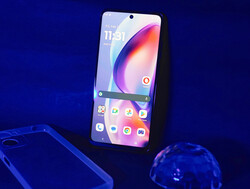
The Moto G05 is a very affordable smartphone inside an attractive and high-quality case.
However, its lack of NFC is annoying, as it means you can't use the popular Google Pay.
Motorola Moto G05
- 03/13/2025 v8
Florian Schmitt
Transparency
The selection of devices to be reviewed is made by our editorial team. The test sample was provided to the author as a loan by the manufacturer or retailer for the purpose of this review. The lender had no influence on this review, nor did the manufacturer receive a copy of this review before publication. There was no obligation to publish this review. As an independent media company, Notebookcheck is not subjected to the authority of manufacturers, retailers or publishers.
This is how Notebookcheck is testing
Every year, Notebookcheck independently reviews hundreds of laptops and smartphones using standardized procedures to ensure that all results are comparable. We have continuously developed our test methods for around 20 years and set industry standards in the process. In our test labs, high-quality measuring equipment is utilized by experienced technicians and editors. These tests involve a multi-stage validation process. Our complex rating system is based on hundreds of well-founded measurements and benchmarks, which maintains objectivity. Further information on our test methods can be found here.








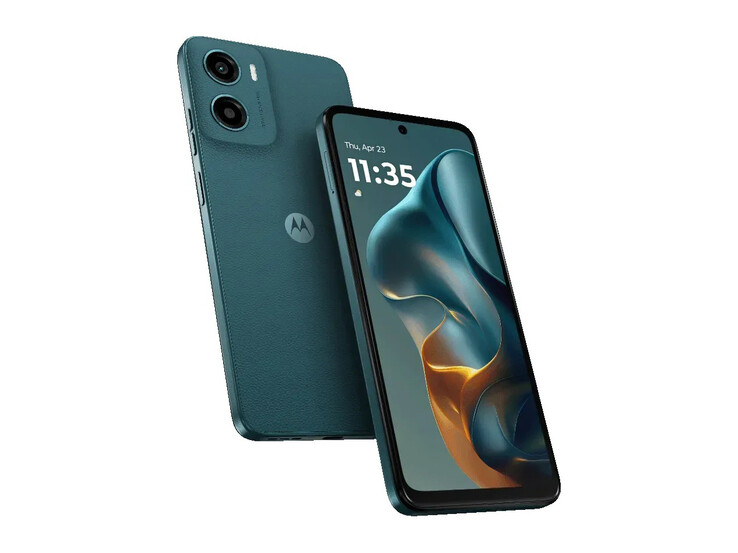






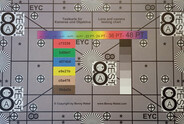




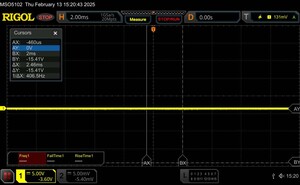
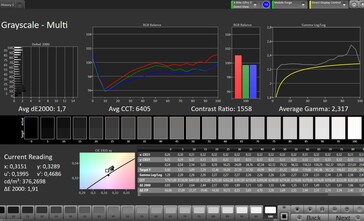
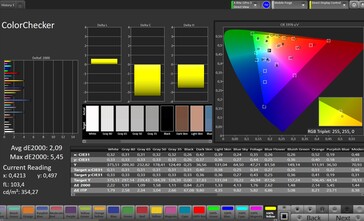
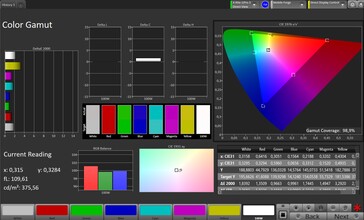
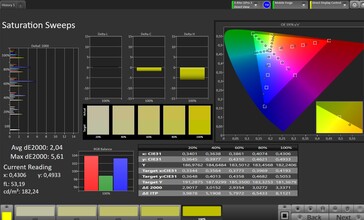
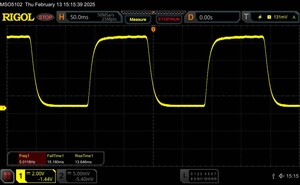
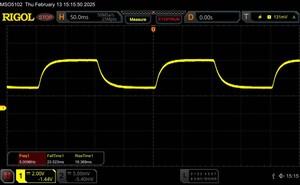
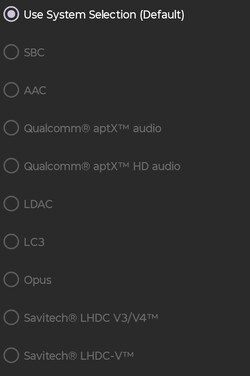
 Total Sustainability Score:
Total Sustainability Score: 